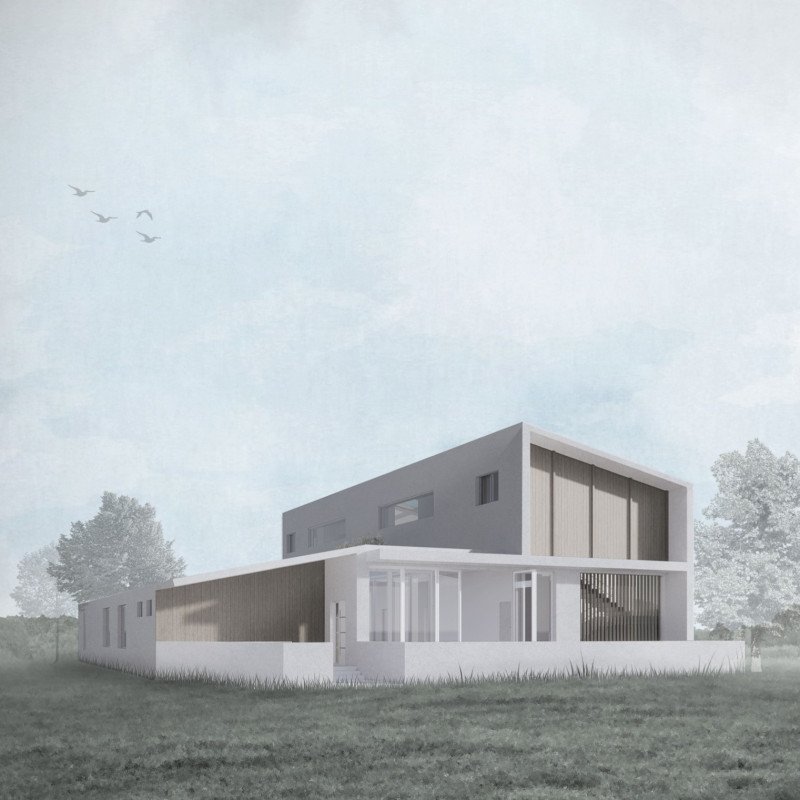5 key facts about this project
Functionally, the Olive House is designed to accommodate both communal and private activities. This duality enhances the living experience, offering spaces that encourage interaction among residents while also providing areas that promote tranquility and solitude. The layout is meticulously arranged to center around a main courtyard, which acts as the focal point of the design. The courtyard not only enhances the esthetic appeal of the house but also facilitates natural ventilation and sunlight throughout various rooms.
The architectural design is defined by its careful consideration of spatial flow, featuring open-plan layouts that promote ease of movement and accessibility. Large glass panels and strategically placed operable windows enhance this flow further, allowing ample natural light to penetrate the interior spaces while ensuring that residents remain connected to the surrounding landscape. This approach not only enriches the interior atmosphere but also supports the overarching sustainability goals of the project by reducing reliance on artificial lighting and mechanical heating or cooling systems.
Materiality plays a crucial role in the Olive House, reflecting a commitment to environmental stewardship and sustainable construction practices. The project leverages a combination of concrete, glass, wood, and ceramic tiles. Concrete provides structural integrity and thermal mass, enabling the building to maintain a stable internal temperature. The use of glass allows for panoramic views of the landscape while fostering a sense of openness. Timber elements introduce warmth and a natural quality, making the interiors feel inviting and belonging to their environment. Ceramic tiles are used for flooring, merging practicality with aesthetic considerations.
Unique design approaches define the Olive House and set it apart from conventional residential projects. One noteworthy aspect is the integration of green elements directly into the architectural framework, including the incorporation of olive trees within the design. This not only beautifies the environment but also reinforces biophilia, encouraging inhabitants to appreciate and engage with nature regularly. The project’s strategy of utilizing natural ventilation through the careful placement of operable windows is another key innovation, allowing for an organic flow of fresh air while minimizing energy consumption.
Additionally, light plays an important role in the Olive House’s design. The thoughtful placement of skylights and large windows creates dynamic lighting conditions that evolve throughout the day, in turn influencing the living experience. The interplay between light and shadow highlights the intricate architectural elements and enhances the overall ambiance of the home.
Overall, the Olive House is a well-designed architectural project that encourages a sustainable lifestyle while promoting a conscious engagement with the surrounding environment. Its design thoughtfully encompasses cultural significance through the lens of modern architectural practices, ultimately presenting a harmonious blend of aesthetics, functionality, and ecological awareness. For those interested in delving deeper into the architectural details, including architectural plans, architectural sections, and innovative architectural ideas, an exploration of the project presentation is highly recommended.


























